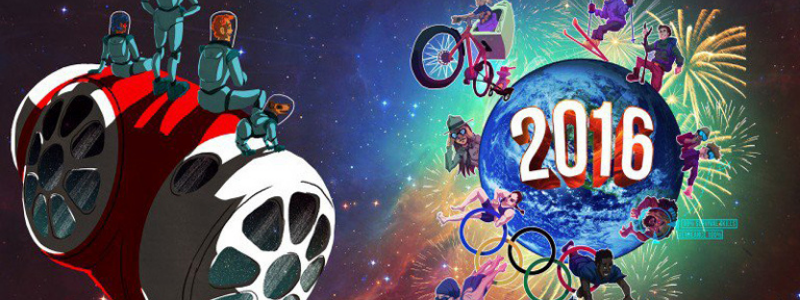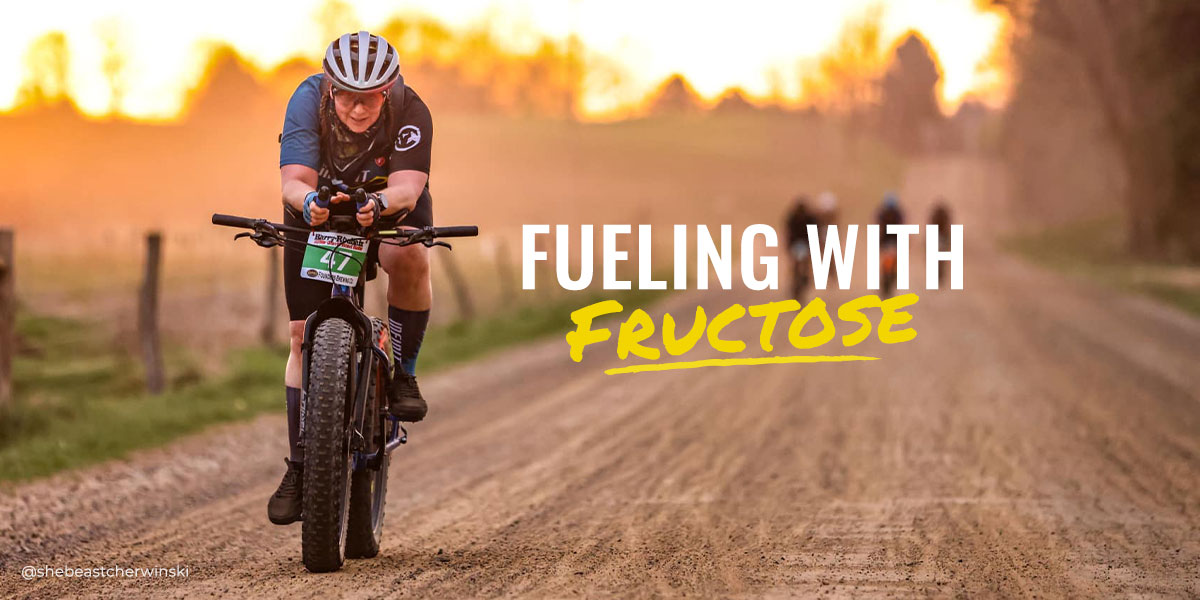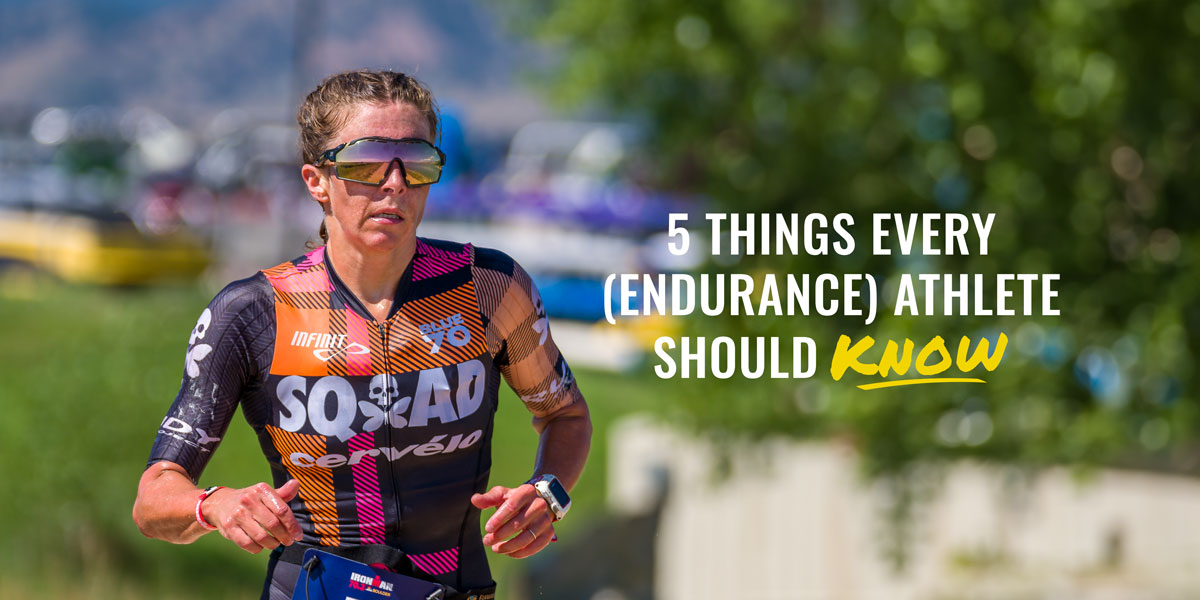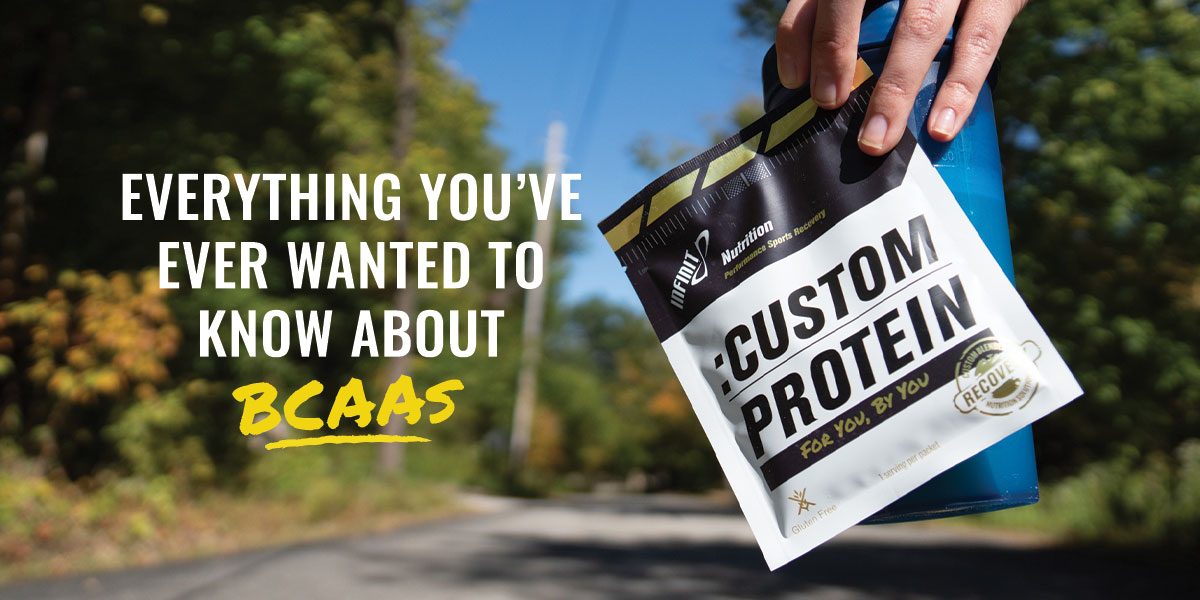Outside Magazine: The Outside Guide to 2016
- Feb 16, 2016

Originally published in Outside Magazine, December 2015
From new sports (bikepacking!) to epic expeditions (high school twins will make first descents in Antarctica!), we're laying down 22 bold predictions about the people, trends, and gear that will shape our world in 2016.
Bikepacking Will Displace Backpacking
Bikepacking—long-distance backpacking trips by bike instead of foot—has exploded of late, inspiring websites, e-zines, specialized gear, and even films. Try it and it’s easy to understand the passion. “If somebody loves mountain biking and camping, it’s the perfect storm,” says Logan Watts, editor of Bikepacking.com, which features more than 70 routes complete with GPS coordinates. “The great thing about it is that you can tweak a bike you already have, use a soft bag that straps to your frame, and just take off.” Newbies can use their own bike and a backpack, but Watts suggests a few essential pieces of gear to help distribute the load.

Photo: Inga Hendrickson
- Revelate Sweetroll Handlebar Bag ($100)
With roll-down closures, this waterproof system from bikepacking market leader Revelate enables easy packing and fast deployment of an ultralight tent and sleeping bag. An accessory pocket stashes tools, and webbing loops let you strap on extras. - Revelate Tangle Frame Bag ($90)
The sleek Tangle wedges in neatly between your frame tubes and can fit a camp stove, a jacket, a sleeping pad, and plenty of grub. - CamelBak Skyline 10 LR Hydration Pack ($130)
The LR stands for Low Rider, and it rests in the lumbar position, easing the load on your back during long rides. - Porcelain Rocket Mr. Fusion Seat Eystem ($185)
The Mr. Fusion is a little pricier than other under-saddle bags, but it’s fully waterproof and comes with a clever stabilizing rack that secures to your seatpost. - Salsa Deadwood Bike ($2,599)
This bikepacking-specific ride matches drop bars with 29-inch-plus wheels and three-inch tires (wide but not quite fat) so you can roll efficiently over rugged terrain. The sturdy steel frame has numerous braze-ons, enabling all kinds of bag-attachment configurations.
Environmental Power Rankings
The issues that will be most important in 2016
- Solar
The technology keeps improving, more areas are becoming viable, the cost is going down—and utility companies are freaking out.
Position change since 2015: +1 - Drought
Wildfires continue to set records, but the Godzilla El Niño winter will bring much-needed moisture to the western United States.
Position change since 2015: -1 - Overall Hope for the Human Race
If private businesses can drive the renewable-power industries and pan-political coalitions can protect the sage grouse, we might just have a chance.
Position change since 2015: Previously unranked - Carbon Emissions
Countries gathering in December at the United Nations Conference on Climate Change, in Paris, will commit to a 40 percent reduction in greenhouse gases; the entire GOP presidential field will immediately denounce the whole thing as “a bunch of malarky.”
Position change since 2015: -1
No longer ranked: Jonathan Franzen’s climate essays
These Olympians Will Become American Heroes
Gwen Jorgensen, Triathlon
For the past decade, the U.S. women have been middling performers in triathlon; their last medal came in 2004. This summer in Rio, they will dominate. And they’ll be led by Jorgensen, currently number one in the world and easily the field favorite. Earlier this year, she went undefeated in 12 World Triathlon Series races. With teammates Sarah True (current world number three) and surging Katie Zaferes, Team USA has a good chance to sweep the podium.
Carlin Isles, Rugby
The world’s ballsiest sport is returning to the Olympics for the first time since 1924, when it was large-squad. (In Rio, the teams will be smaller and the matches shorter.) Isles is the hardest-charging player in the game—he clocks a nearly Olympic-caliber 100 meters and hits hard enough to have made the Detroit Lions practice squad.
Adeline Gray, Wrestling
An American woman has never won Olympic gold in wrestling. That will change next year. Gray, the reigning world champion and current world number one, grew up tangling with the boys and should make short work of the field.
Cuba Will Live Up to the Hype

Currently, the island is in a sweet spot between unexplored and overexposed. The tourism sector is developed enough to be accommodating, and the U.S. will soon lift the travel restrictions that have deterred law-abiding Yanks. Here are some itineraries, suggested by Cuba-crazy contributing editor Patrick Symmes.
Go Deep
Cuban seas are some of the best preserved in the Caribbean. David Guggenheim, known as the Ocean Doctor, runs scuba tours to Gardens of the Queen, an island-filled shelf off Cuba’s southern coast (from $7,500). Surfers should head to Cuba’s east coast, which faces the Atlantic’s big rollers.
Get High
The western valley of Viñales is famous for steep, crenelated 1,000-foot karst towers called mogotes. The Cuban government banned guides from leading clients up them, but a plan to change that is expected to go into effect soon. Check out cubaclimbing.com for updates.
Head for the Hills
The lush Sierra Maestra is the country’s longest mountain range. Some of the peaks are off-limits, but there are hiking trails in Turquino National Park, named after the 6,476-foot mountain, Cuba’s tallest. Hikers must hire a guide; find one at the park entrance.
Pop Quiz: Can’t Track This!
Fitness gadgets will continue to proliferate in the year ahead. How wired an athlete are you? See if you can distinguish the newest trackers from the tracks off Drake’s 2015 mix tape If You’re Reading This It’s Too Late. (Click for the answer.)
1. Spark
2. Watch 2
3. Legend
4. Star67
5. vivosmart
6. Energy
Coming Attractions Will Go Outdoors

Leonardo DiCaprio in The Revenant. Photo: Twentieth Century Fox Corporation
Books and movies to watch for in 2016
The Revenant (January 8)
Oscar-winning director Alejandro González Iñárritu’s new film stars Leonardo DiCaprio as mountain man Hugh Glass, who was ripped to shreds by a grizzly, left for dead by John Fitzgerald (Tom Hardy), and crawled 200 miles back to civilization.
The Bad-Ass Librarians of Timbuktu, by Joshua Hammer (April 19)
Outside contributing editor Hammer’s book tells the inside story of the historians who smuggled 350,000 volumes of ancient Islamic texts out of Timbuktu to protect them from destruction at the hands of Al Qaeda. $26, Simon and Schuster
The Dragon Behind the Glass, by Emily Voigt (May 24)
Voigt tracks the world’s most expensive aquarium denizen—the Asian arowana, or “dragon fish”—from the last tropical wildernesses to the black markets of New York City. $26, Scribner
The Hour of Land: A Personal Topography of America’s National Parks, by Terry Tempest Williams (June 7)
Williams celebrates the centennial of the national parks by profiling a dozen of them and arguing for the cultural importance of wild places in the United States. $27, Sarah Crichton Books
Deepwater Horizon (September 30)
One of the most devastating oil spills in history—and those who lived through it—gets the Hollywood treatment from director Peter Berg (TV’s Friday Night Lights) and stars Mark Wahlberg as an electrician trying to save the crew from the burning rig.
The National Park Service Will Watch Your Every Step

Photo: Robert Harkness
Yes, millions will invade the national parks next summer for the Park Service’s 100th anniversary, but the crowds may not be so bad. An innovative effort to alleviate congestion, which uses GPS devices to determine how people move through the parks, is already improving shuttle services and informing where new parking lots and trails are installed. “We can see where they go and don’t go, where they stop, and the speed at which they travel,” says Peter Newman, a professor of recreation, park, and tourism management at Penn State. During a 2014–15 pilot program in Grand Teton National Park, researchers handed trackers to willing visitors. In 2016, Utah State professor Chris Monz, a colleague of Newman’s, will expand the project to Rocky Mountain National Park.
The Chairlift Will Be Your Editing Suite
It’s a powder day at Mammoth Mountain, and you and a friend are filming in the terrain park—you doing cork 720s while wearing a GoPro, your buddy following behind you with his Canon. Footage in hand, you face a dilemma: go back to the hotel to edit and post (gotta get that sponsorship, bro!) or keep ripping. The Gnarbox ($249) lets you have it both ways. Simply transfer your footage to the device via the built-in card reader, do a quick edit using the Gnarbox smartphone app (you access the video files wirelessly, by connecting your phone to the Gnarbox’s Wi-Fi hotspot), then upload it to your favorite social-media network. “We are about minimal time in front of a screen,” says Gnarbox cofounder and CEO Tim Feess.
Augmented Reality Will Reach the Masses

The view with GogglePal's AR add-on. Photo: GogglePal
Augmented-reality glasses display computer-generated imagery and data onto a lens, allowing you to see the real world and the virtual stuff simultaneously. While the technology has been around for years, it’s been so expensive that only elite athletes had any reason to splurge on it. That will change in 2016 with two lower-cost devices that allow amateur skiers and cyclists to get in on the game.
Following a successful Kickstarter campaign earlier this year, GogglePal will ship in January and cost $225, far less than the more feature-heavy RideOn AR ski goggles ($899). A beeper-size GPS unit with a six-axis gyroscope attaches to the strap and tracks stats like speed and vertical drop. That information is then displayed via a projector, about the size of a nickel, that attaches to the inside of the lens. You can also view a map that shows the location of your friends on the mountain—as long as they’re wearing GogglePals, too.
In the cycling world, 2016 will bring the Senth IN1 ($300). The glasses display directions and point out hazards in the road such as cars and other cyclists. This type of AR—which recognizes and interprets real-world information—is more complicated, however, and some say that low-cost companies struggle to do it well. “There is so much image processing that needs to happen. Good AR is difficult to achieve cheaply,” says Cody Karutz, hardware manager at Stanford University’s Virtual Human Interaction Lab. But while the Senth IN1 may not prove to be a serious competitor to the Recon Jet ($499), the leading cycling smart glasses on the market, expect a contender soon.
—Shelby Carpenter
Your Next Diet Will Be Customized
Forget Atkins, paleo, and South Beach. Personalization will dictate the food you’ll eat in 2016. At WellPath, consumers answer questions about themselves, upload data from their Fitbits, and get a custom shake mix and daily vitamins designed for their needs. At Infinit Nutrition, you schedule a consultation with nutrition professionals or elite athletes to discuss goals and the physical demands of your activity, and the company creates a just-for-you sports drink with the optimal calories, carbs, electrolytes, and taste profile. You can even add protein and caffeine. The formula is saved on the site and can be tweaked before you reorder. “People think customization is cumbersome or difficult,” says Michael Folan, a ten-time Ironman finisher who is president and CEO of Infinit. “But it enables you to be very specific and simplify your day.” Plus, he insists, “We end up being about half the cost” of the off-the-shelf stuff.
The Moniz Twins Will Make Antarctica Their Personal Ski Hill

Kaylee and Matt Moniz. Photo: Benjamin Rasmussen
This January, 17-year-old Matt and Kaylee Moniz will spend their winter break in the central mountains of Antarctica in search of first ascents and descents. The two grew up in Boulder, Colorado, kayaking, hiking, and skiing with their parents, Michael Moniz, a venture capitalist and network-infrastructure executive, and Dee, a nurse. “We had them on skis in the driveway as soon as they could stand,” says Michael.
In 2007, when the twins were nine, Matt and Michael trekked to Everest Base Camp, and Matt decided he wanted to start climbing big peaks. While Kaylee focused on skiing (she competed in the United States Ski and Snowboard Association’s Rocky Mountain Division), Matt turned his attention to the mountains and quickly found success. In 2010, at age 12, he and his dad set a new speed record for ascending the highest peak in every U.S. state in 43 days, 3 hours, 51 minutes, and 9 seconds. It was while descending Denali that Matt discovered ski mountaineering. “What would have been a five-day descent took us two hours on skis,” Matt says. “I realized that this is the way to get off these peaks.”
He began training in Utah with Argentine guide Willie Benegas—who has 11 Everest summits under his belt. Soon sponsors like Leki, Mountain Hardwear, and Zamberlan were lining up to help support the trips.
“Matt has the mechanical abilities to deal with these big expeditions and the emotional abilities, too,” says Benegas. In 2014, they reached the top of both Cho Oyu and Makalu. (Matt is the youngest person to summit 27,766-foot Makalu.) They planned to climb and ski Lhotse in 2015 but abandoned the attempt after the devastating Nepal earthquake. Instead, they did relief work.
When Matt returned home, he switched his focus to the next target on his Seven Summits quest: Antarctica. His grandparents used to build scientific bases there and often told stories about their time on the empty continent. “I look at Antarctica constantly on Google Earth,” Moniz says. “All those unskied lines.”
Now seniors at Boulder High School, Matt and Kaylee will leave for Antarctica in January—by which time they hope to be done with their college applications. Benegas and their father plan to join them in what will be Kaylee’s first mountaineering experience. “I’ve wanted to go there for years,” says Kaylee. “I just hope I can keep up with my brother on the climb.”
The group will travel to Patriot Hills base camp, near the Ellsworth Mountains, and then attempt to summit and ski the 16,067-foot Vinson Massif. Afterward, they’ll take a crack at several unnamed peaks in the Sentinel Range, using kites to travel between mountains for up to a month.
“It’s a matter of what looks good and spending a lot of time with maps and binoculars,” Matt says. “Many of the central mountains have never been climbed or skied before. That’s what’s really exciting.”
—Ben Yeager
Biolite Will Save the World with a Stove

The BioLite HomeStove. Photo: Courtesy of BioLite
If you camp, you’ve seen a BioLite CampStove, which uses kindling to cook your oatmeal while generating electricity to charge a phone or camera. But the greater contribution from founders Jonathan Cedar and Alec Drummond may be the store they’re opening in India, which will sell a home-powering stove aimed at the developing world.
The HomeStove is an 18-pound version of the CampStove. Cedar says it produces ten times fewer emissions than the smoky fires that three billion people now use to cook with worldwide. It also produces electricity, something 1.2 billion people still don’t have.
There are currently hundreds of clean-burning stoves aimed at the same market, but few burn as cleanly as the HomeStove, and even fewer provide electricity. University of California at Berkeley professor Kirk Smith, who studies these stoves’ impact, says BioLite could have staying power. Though the stoves don’t burn as cleanly as he’d like, “they’re one of the better ones out there,” he says.
Cedar, 35, believes BioLite has an edge due to what he calls a “parallel innovation” business model. “The profits from the recreational markets help get things off the ground in the developing world,” he says. It’s a model other outdoor companies are using, too: recently, MSR announced that it had worked with a nonprofit to create a soup-can-size device that can purify water using table salt and a moped battery.
NGOs are taking notice of BioLite’s plan. The company has received more than $5 million in grants from groups like USAID and another $5 million from venture capitalists. BioLite has already sold 10,000 HomeStoves and in November 2015 was slated to open its store in Bhubaneswar, in eastern India, where it hopes to sell 100,000 units for $50 each.
The company also recently introduced the NanoGrid, a combination battery, flashlight, and lantern that can store power from the stove for later use. Next up, Cedar hopes to develop refrigeration and water-purification technologies that can also be powered by the HomeStove. “Broadly speaking, we want to reinvent everything the grid does, but on a personal scale,” he says.
Anyone Will Be Able to Run a Marathon from Their Living Room

Didn’t land a spot in your favorite road race? Pretty soon you’ll be able to switch on your tablet and toe up to a virtual starting line. Boston’s Outside Interactive (no relation) allows runners to participate in races even though they live thousands of miles away. A pilot effort was held in summer 2015 at the New Balance Falmouth Road Race, the famed seven-miler on Cape Cod. One hundred virtual participants paid a reduced entry fee to download an app, then placed the screen before them on a treadmill and competed in a remote-runners-only category. The app shows footage filmed from a Segway before the race, providing a Kenyan’s-eye view of cheering fans. Pace and incline can be adjusted manually with on-screen prompts to match the POV, or a device on your shoe will automatically slow the video to match your speed. The company is now talking with organizers of several running events nationwide to make their races available. Says founder Gary McNamee: “Our internal motto is, ‘Making treadmill running suck less since 2011.’ ”
Private Space Exploration Will Reclaim Its Mojo

Clockwise from top left: SpaceX, Zero2Infinity, World View, Virgin Galactic. Photo: Background: Bill Frymire/Corbis; Illustrations: Robert Harkness
- SpaceX
One of its Falcon 9 rockets broke apart in a June flight, but Elon Musk resumed tests by December and plans to launch the larger Falcon Heavy in the year ahead. - Zero2Infinity
Who needs rockets? This Spanish company, which aims to carry passengers to 118,000 feet in balloons, should complete final testing in 2016 or 2017. - World View
Your nearest bet for a sub-orbital joyride. Once final tests have been completed in 2016, passengers will enjoy a six-hour ride to 100,000 feet in a pressurized capsule. - Virgin Galactic
In October 2014, Richard Branson’s flagship VSS Enterprise exploded at 45,000 feet, killing the copilot. Flights will resume next year with a new, safer craft.
Live, from a Thousand GoPros, It’s the Tour de France!
Next year, according to Todd Ballard, senior director of lifestyle marketing at GoPro, the action-cam company hopes to live-stream the view from inside the peloton at the Tour, with cameras on the handlebars of top riders. It plans to expand soon after. “I don’t think we’ve ruled any sport out,” says Ballard. Well, you should, GoPro. Use our handy decision tree to determine what might play and what certainly won’t.

John John’s New Movie Will Blow Your Mind

John John Florence in View from a Blue Moon. Photo: Dom Mosqueira; Courtesy of Stance.
Fans of 23-year-old Hawaiian pro surfer John John Florence have long been dismayed by his inability to win a World Championship. (He has never finished better that third.) The main problem: while his competitors surf conservatively, ever mindful of the judges, Florence airs it out every time. This makes for exciting spectating but erratic results (and the occasional injury). But just in time for the holidays, we get to see Florence do what he does best in View from a Blue Moon. Made in collaboration with innovative production house Brain Farm, it should provide a stunning look at Florence’s talents on location in Brazil, Australia, South Africa, Hawaii, and Tahiti.
The Prognosticator

Clockwise from left: Mikaela Shiffrin, Lewis Kent, Eliud Kipehoge, Marcel Hirscher, Chris Froome. Photo: Grafton Smith/United States Ski and Snowboard Association; Damien Maloney; Yunus Kaymaz/Anadolu Agency/Getty; Marco Trovati/AP/Corbis; Courtesy of Sun Cycle
Our podium picks for the year’s biggest competitions
FIS Alpine Ski World Cup (October 2015–March 2016)
After sustaining injuries, Bode Miller’s a maybe this season, and Lindsey Vonn’s looking less sure for the title. Instead, on the men’s side, look for Austrian Marcel Hirscher, one of the best of all time, to win his fifth straight overall title. American Mikaela Shiffrin will dominate slalom again, taking home top honors for women.
Beer Mile World Championships (December 2015)
The sub-five-minute floodgates have opened, thanks to a recent switch to chug-friendly bottles instead of cans—even temperatures have been optimized for quicker quaffing. The money is on 21-year-old Canadian Lewis “Louie Beer K” Kent, who still hasn’t peaked and will definitely regain his world record. But there’s no shortage of competitors. A beer-miler will likely flirt with a sub-4:50 mile in 2016.
Tour de France (July 2016)
Chris Froome wins again. Alberto Contador is on the downslope of his career. And if Nairo Quintana couldn’t outclimb Froomey to victory last year, on a course that favored him, nothing will stop the Brit in 2016.
World Surf League Championship Tour (March–December 2016)
Gabriel Medina will win his second world title in 2016. John John Florence may be the better surfer overall, but Medina is ruthlessly competitive.
Olympic Marathon (August 2016)
Boston and New York City won’t be the focus in 2016. Look for Kenyans to clean up in Rio: Eliud Kipehoge on the men’s side and Gladys Cherono on the women’s.
The UCI Will Finally Give Cyclists a Brake
In 2016, for the first time, disc brakes will be allowed at the Tour de France and other UCI-sanctioned races. Hydraulic disc brakes have been popping up on road bikes in recent years, but the UCI, citing safety concerns, banned them. In 2015, cycling’s governing body permitted pro teams to test disc-brake bikes in two races of their choice, with an eye toward allowing them in all events in 2016. “The benefit of disc brakes of course is the stopping power,” says Paul Lew, director of technology and innovation for Reynolds Cycling and vice chairman of UCI’s wheel committee. Disc brakes also give cyclists the ability to slow down in smaller increments, which means greater control.
Scientists Will Attack the West's Most Dangerous Invader

Photo: Gary Calton/Eyevine
The invasive weed cheatgrass can be found in every state in the U.S., infesting some 100 million acres in the West alone. If you hike, you’ve likely brought some home on your socks and in your pup’s ears. It’s most notorious, though, for crowding out native vegetation and fueling the hellacious wildfires that now rage across the country. But help is finally at hand: Ann Kennedy, a soil scientist with the Department of Agriculture who has worried about the weed for 30 years, has discovered naturally occurring bacteria in the dirt that suppress root growth and help clear the way for native species’ return. Next year, the first EPA-approved product using that bacteria will come to market.
Round and Round We Go...
Spin classes are a great workout. But in the age of always better, turning the cranks is no longer enough. Studios have added barre, resistance bands, and even free weights to the routine. What absurdities might we see in the year ahead?
- Bodyblades
- Drum Circles
- Heavy Ropes
- Water Aerobics
- Kettlebells
Blow Hard
Air-filled gear like sleeping pads, rafts, and travel pillows are a good way to keep things light and packable. Now companies are expanding the concept to paddleboards, backpacks, and even tents. Expect to see more blow-up gear than ever in 2016—though that doesn’t mean you should buy it.
Airtight:
- Drift boats
- Bike travel bags
- Snowshoes
Leaky:
- Running shoes
- Lanterns
- Hot tubs
Wishful Thinking
The trends, tools, and irritations we hope will disappear with the snow in the coming year
- Running’s doping problem
- “Slackcountry”
- Trail-running film festivals
- Selfie sticks
- The effects of Wild and A Walk in the Woods on trail traffic
Article reprinted with the permission of Outside Magazine.
Original Article Link
Huffington Post Healthy Living Blog Post










